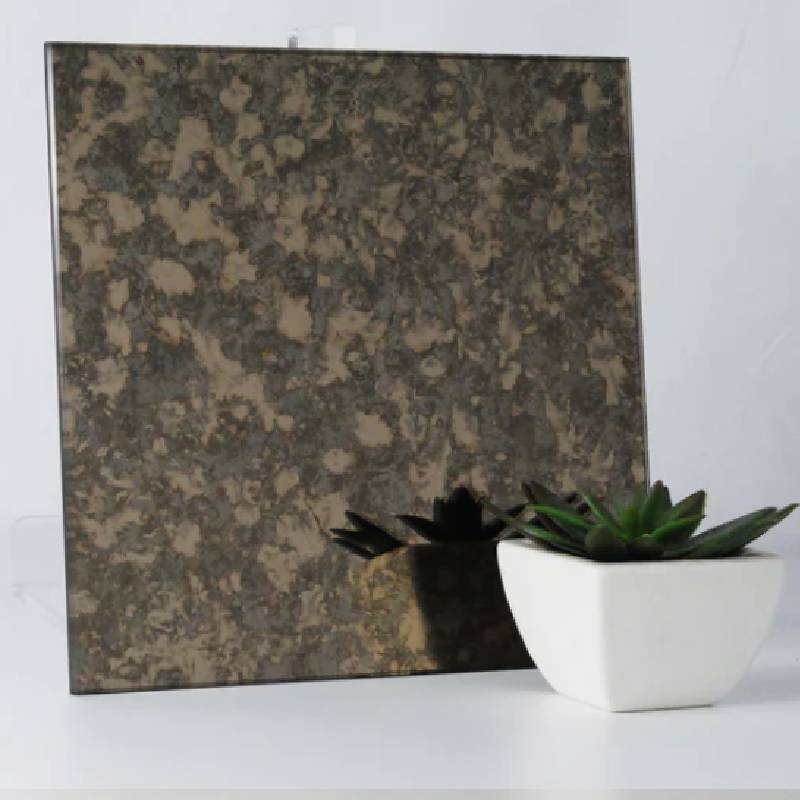The Versatility and Importance of Plain Float Glass
Plain float glass, a fundamental material in the world of architecture and design, is renowned for its clarity, smoothness, and versatility. This type of glass is produced using the float glass process, a method developed in the mid-20th century that has transformed the glass-making industry. Understanding the attributes and applications of plain float glass is crucial for architects, builders, and homeowners alike.
The Float Glass Process
The float glass manufacturing process involves melting raw materials, primarily silica sand, soda ash, and limestone, at high temperatures. The molten glass is then poured onto a bed of molten tin, which results in a perfectly flat surface. As the glass cools, it floats on the tin, allowing it to form a uniform thickness and achieve the desired optical clarity. This process not only ensures an even surface but also minimizes impurities, making plain float glass transparent and free of distortions.
Key Properties
One of the most remarkable characteristics of plain float glass is its optical clarity. This transparency makes it ideal for applications where visibility and aesthetics are paramount. Additionally, plain float glass is non-reflective, which is advantageous in settings that require natural light without glare. The smooth surface of the glass also allows for easy cleaning, enhancing its practicality in various environments.
Furthermore, float glass offers a good level of thermal insulation. While it does not possess the energy-efficient properties of specialized glazing, it can reduce heat transfer to some extent, making it a suitable option for moderate climates. When combined with other materials or treated with coatings, its thermal performance can be significantly improved.
Applications in Architecture and Design
plain float glass
Plain float glass has become a staple in both residential and commercial architecture. Its primary uses include windows, doors, and facades, where it provides natural light and visual connectivity between indoor and outdoor spaces. The glass is often utilized in curtain wall systems, allowing for expansive views while maintaining structural integrity.
In interior design, plain float glass can be found in various applications, such as room dividers, shower enclosures, and tabletops. Its elegance and simplicity make it a favored choice for modern and minimalist interiors, where clean lines and open spaces are emphasized.
Moreover, plain float glass can be enhanced with additional treatments. For instance, it can be tempered to increase its strength and safety, making it suitable for areas subject to impact. Laminated versions can also be produced to provide additional security and sound insulation. These modifications expand the functionality of plain float glass, allowing it to meet diverse consumer needs.
Environmental Considerations
As the world increasingly focuses on sustainability, the glass industry has been adapting to minimize its environmental impact. Float glass is recyclable and can be reprocessed into new glass products, reducing waste. Additionally, advancements in manufacturing processes have led to more energy-efficient production methods, making plain float glass a more sustainable choice for eco-conscious builders.
Conclusion
Plain float glass is more than just a building material; it embodies a blend of beauty, functionality, and innovative manufacturing. Its inherent qualities make it a versatile option in a variety of applications, from enhancing the aesthetic appeal of residential spaces to providing transparency in commercial buildings. As architecture and design continue to evolve, the importance of materials like plain float glass cannot be overstated. Its ability to adapt and meet modern demands ensures that it will remain a vital component of the built environment for years to come.
 Afrikaans
Afrikaans  Albanian
Albanian  Amharic
Amharic  Arabic
Arabic  Armenian
Armenian  Azerbaijani
Azerbaijani  Basque
Basque  Belarusian
Belarusian  Bengali
Bengali  Bosnian
Bosnian  Bulgarian
Bulgarian  Catalan
Catalan  Cebuano
Cebuano  Corsican
Corsican  Croatian
Croatian  Czech
Czech  Danish
Danish  Dutch
Dutch  English
English  Esperanto
Esperanto  Estonian
Estonian  Finnish
Finnish  French
French  Frisian
Frisian  Galician
Galician  Georgian
Georgian  German
German  Greek
Greek  Gujarati
Gujarati  Haitian Creole
Haitian Creole  hausa
hausa  hawaiian
hawaiian  Hebrew
Hebrew  Hindi
Hindi  Miao
Miao  Hungarian
Hungarian  Icelandic
Icelandic  igbo
igbo  Indonesian
Indonesian  irish
irish  Italian
Italian  Japanese
Japanese  Javanese
Javanese  Kannada
Kannada  kazakh
kazakh  Khmer
Khmer  Rwandese
Rwandese  Korean
Korean  Kurdish
Kurdish  Kyrgyz
Kyrgyz  Lao
Lao  Latin
Latin  Latvian
Latvian  Lithuanian
Lithuanian  Luxembourgish
Luxembourgish  Macedonian
Macedonian  Malgashi
Malgashi  Malay
Malay  Malayalam
Malayalam  Maltese
Maltese  Maori
Maori  Marathi
Marathi  Mongolian
Mongolian  Myanmar
Myanmar  Nepali
Nepali  Norwegian
Norwegian  Norwegian
Norwegian  Occitan
Occitan  Pashto
Pashto  Persian
Persian  Polish
Polish  Portuguese
Portuguese  Punjabi
Punjabi  Romanian
Romanian  Russian
Russian  Samoan
Samoan  Scottish Gaelic
Scottish Gaelic  Serbian
Serbian  Sesotho
Sesotho  Shona
Shona  Sindhi
Sindhi  Sinhala
Sinhala  Slovak
Slovak  Slovenian
Slovenian  Somali
Somali  Spanish
Spanish  Sundanese
Sundanese  Swahili
Swahili  Swedish
Swedish  Tagalog
Tagalog  Tajik
Tajik  Tamil
Tamil  Tatar
Tatar  Telugu
Telugu  Thai
Thai  Turkish
Turkish  Turkmen
Turkmen  Ukrainian
Ukrainian  Urdu
Urdu  Uighur
Uighur  Uzbek
Uzbek  Vietnamese
Vietnamese  Welsh
Welsh  Bantu
Bantu  Yiddish
Yiddish  Yoruba
Yoruba  Zulu
Zulu 

